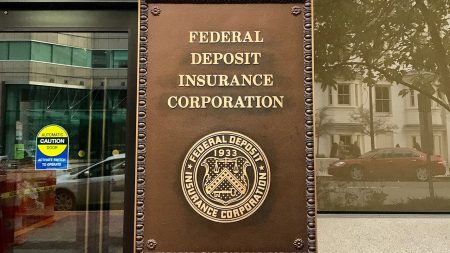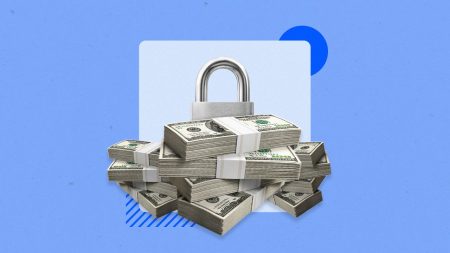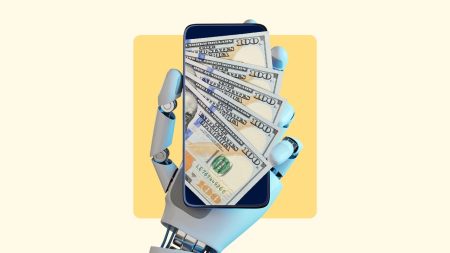Halfpoint Images/Getty Images
Key takeaways
- Personal loans can help you pay for your child’s K-12 private school, but average rates are relatively high.
- Before using a personal loan to cover tuition, make sure to exhaust gift aid options like scholarships and grants.
- If you decide to borrow a personal loan, compare rates and terms from multiple lenders to find the most affordable option.
- Start planning early for future school years to avoid borrowing repeatedly
Private school is expensive. With costs that can run over $15,000 annually, that adds up quickly, especially if you have multiple children. If you find yourself struggling to pay tuition, you might consider a personal loan to bridge the gap, but whether that makes sense depends on a lot of variables in your specific situation.
If you find yourself struggling to pay tuition, you might consider a personal loan to bridge the gap, but whether that makes sense depends on a lot of factors.

The best personal loan rates in 2025
If you decide to borrow a personal loan to cover the cost of your child’s education, consider Bankrate’s picks for the best lenders.
Learn more
Are there personal loans specifically for private school?
Unlike college, you can’t finance private K-12 education with federal or private student loans. Rather, financial aid can be found through state grants or through each school’s financial aid office. These funds are typically donor-based and offered to those who qualify. Others may offer payment plans or reduced tuition programs.
While these options may help initially, if the financial aid falls short or you find yourself needing an extra boost to make the monthly payments, it may be necessary to look into financing the remaining costs. You can use any regular personal loan toward K-12 education costs as long as the lender doesn’t specifically prohibit it.
Some lenders, like Your Tuition Solution and Republic Finance, offer K-12 education loans specifically designed for private school tuition. These loans often provide the following:
-
Loan amounts from $1,000 to $50,000
-
Terms are usually between 24 and 84 months
-
APRs starting around 4 percent for borrowers with strong credit
-
Direct payment to schools in many cases
Editorial insight
Before applying, check the lender’s terms and conditions to make sure the loan can be used for education-related expenses. You can also call the customer service department to confirm. Some lenders prohibit personal loan use for private collegiate-related costs, so it’s best to clarify that this doesn’t apply to all private education before applying.
What to consider when comparing personal loan options
Shopping for education loans can feel overwhelming, so take note of these key details:
- Interest rates and fees
- Loan terms
- Payment process
- Warning signs
When should I take out a personal loan to pay for school?
The smartest time to plan for private school costs is before you need the money. Personal loans can solve immediate funding problems, but they work better as bridge financing while you build a sustainable education budget. Think about how many children you’ll send to private school, ask about multi-child discounts, and find out if schools offer merit scholarships beyond need-based aid.
Sometimes you need financing quickly. For instance, a personal loan might make sense if there’s a last-minute opening at your child’s preferred school and you need to arrange funding fast.
Bankrate’s take:
Remember that your child’s education is important, but so is your family’s financial stability. If you’re prioritizing private school, make sure your financing strategy sets both you and your child up for long-term success.
Make sure interest rates work in your favor
Personal loan rates can be high, sometimes rivaling credit card interest rates, so your creditworthiness matters. The current average personal loan rate sits above 12 percent. If you can qualify for a rate below that benchmark with excellent credit, borrowing could work for your child’s K-12 education. But borrowers with bad credit might face rates as high as 36 percent, making the debt very expensive.
Bankrate’s take:
Prequalify with as many personal loan lenders as possible before formally applying. Prequalifying for a personal loan allows you to compare rates and terms from multiple lenders without harming your score, though it doesn’t guarantee approval.
Your credit score, credit history and previous repayment behavior determine the rate you qualify for. Whether rates stay high or begin falling, improving your credit score helps you qualify for better terms.
What to know about personal loans for private schools
Personal loans are disbursed in a lump sum amount typically within a week, so coordinate with the school’s financial aid office if this timeline falls outside the payment window. That being said, consider the total borrowing cost carefully. Here’s an example:
Let’s say your child’s private school tuition is close to the national average of $15,000. Your excellent credit helps you qualify for a below-average rate of 10 percent. While you can choose a personal loan repayment term as long as seven years, it doesn’t make sense to take on a multi-year debt for a single year’s tuition.
| Key points | 12-month term | 24-month term |
|---|---|---|
|
Monthly payment |
$1,319 |
$692 |
|
Total cost of borrowing |
$15,825 |
$16,612 |
Over the course of a 12-month repayment term, you’ll pay over $800 in interest. While a two-year term results in a lower monthly payment, you’ll pay twice as much in overall interest and will still be repaying the loan after the school year ends.
Other important considerations
- Calculate your actual funding gap before borrowing the full tuition amount
- Some schools work with preferred lenders that may offer better terms
- Ask your financial aid office about all available options
10 Alternative ways to pay for private school
While a personal loan is a good last-resort option, it shouldn’t be the first consideration when paying for private school, especially if you don’t have exceptional credit. Review the following options before taking on more debt.
Bottom line
In many cases, personal loans can be used as K-12 education loans. Approval and funding typically only takes a few days, and rates for borrowers with excellent credit may be as low as 7 percent. If you don’t qualify for a competitive rate, you could end up paying a hefty sum in interest — as much as 36 percent APR.
The key is avoiding a cycle where you’re constantly borrowing for each school year while still paying for previous years. Work closely with your school’s financial aid office to understand all available options. Many schools want to help families find sustainable funding solutions and may offer resources you haven’t considered.
Why we ask for feedback
Your feedback helps us improve our content and services. It takes less than a minute to
complete.
Your responses are anonymous and will only be used for improving our website.
Help us improve our content
Read the full article here












